Abstract
Pigeons pecked for food in a two-key procedure. A concurrent variable-interval variable-interval schedule of reinforcement for two classes of interresponse times was arranged on each key. A visual stimulus set the occasion for potential reinforcement of the four operant classes: shorter and longer interresponse times on left and right keys. In Exp. I, the relative frequency of respones on a key equalled the relative frequency of reinforcement on that key. In Exp. II, the relative frequency of an interresponse time equalled the relative reciprocal of its length. In Exp. III, the relative frequency of an interresponse time was a monotonically increasing function of its relative frequency of reinforcement. These functions relating the relative frequency of an interresponse time to its relative length and to its relative frequency of reinforcement were the same as if there had been no second key. Also, the distribution of responses between keys was independent of the relative frequency of an interresponse time on either key. Experiment IV replicated Exp. I except that choices between keys were controlled by a stimulus that signalled the availability of reinforcement on the right key. A comparison of Exp. I and IV suggested that the relative frequency of an interresponse time on one key generally was independent of behavior on the other key, but that the number of responses per minute on a key did depend on behavior on the other key.
Full text
PDF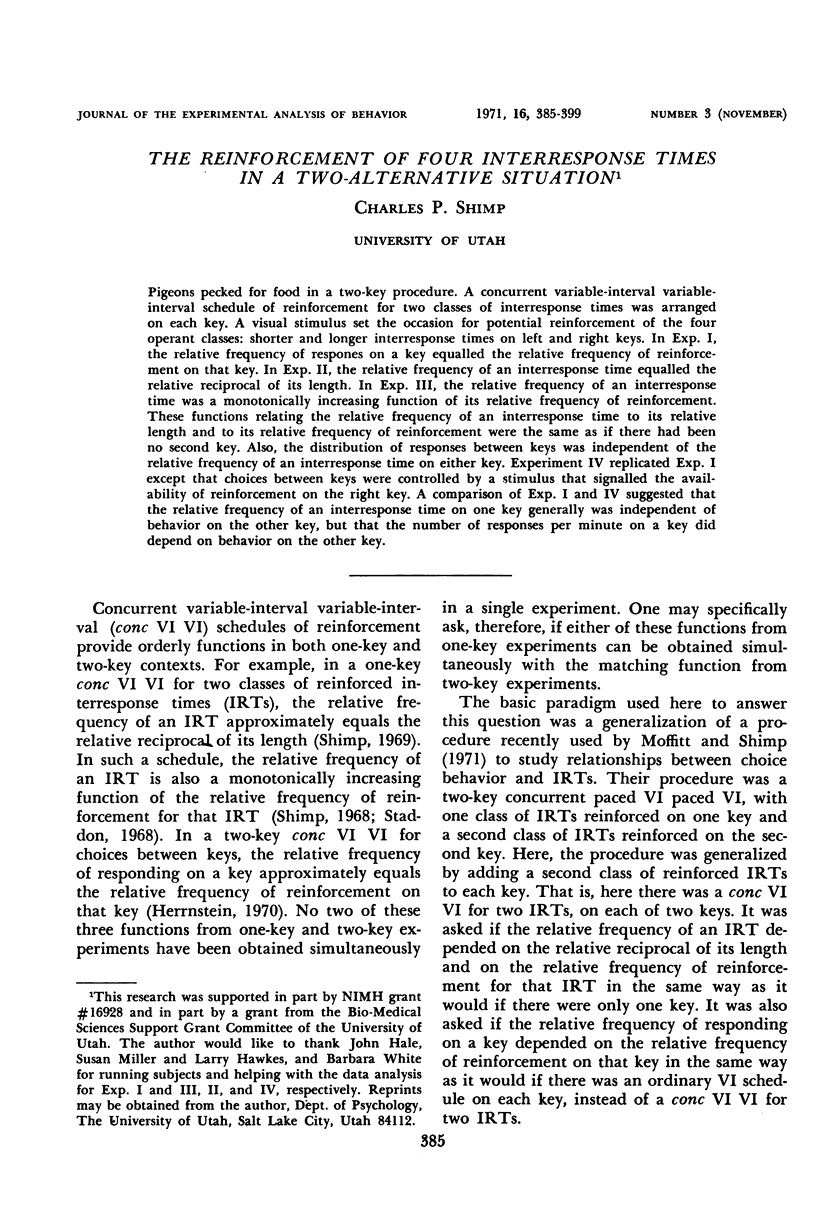
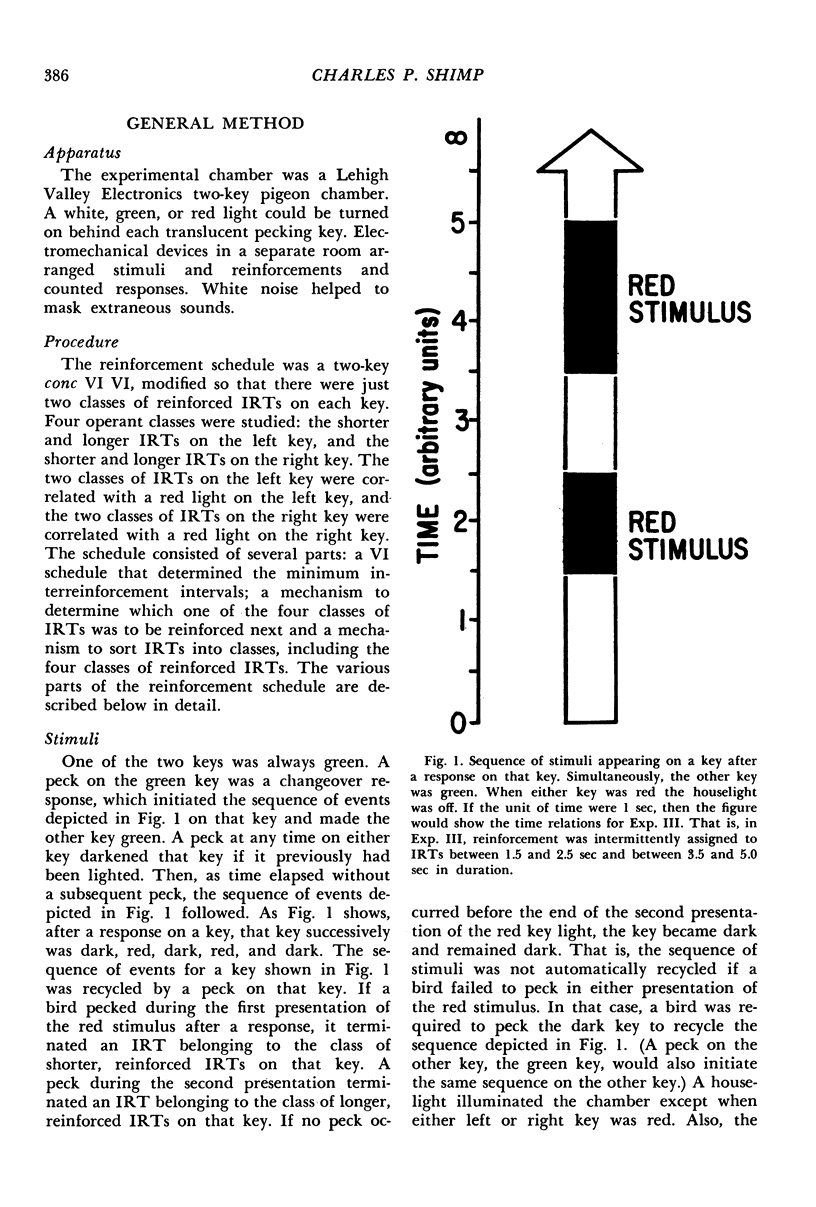
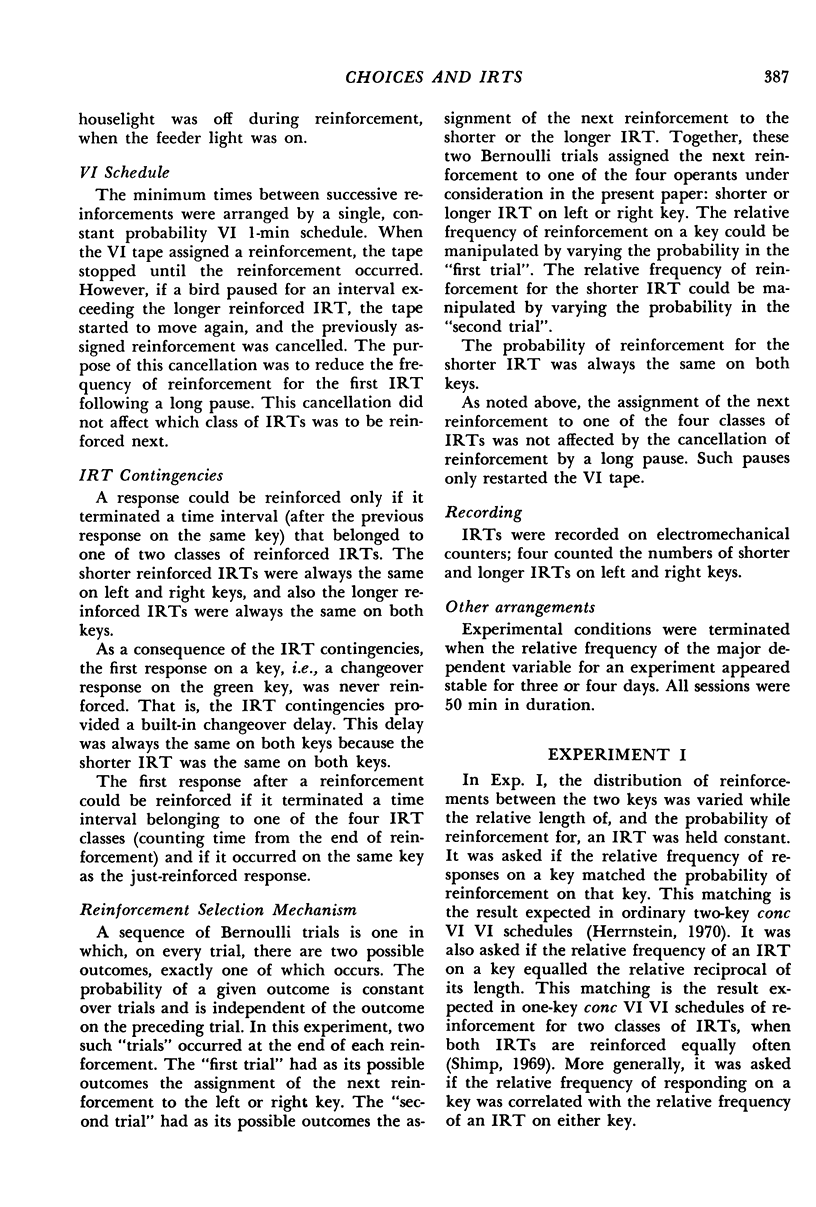
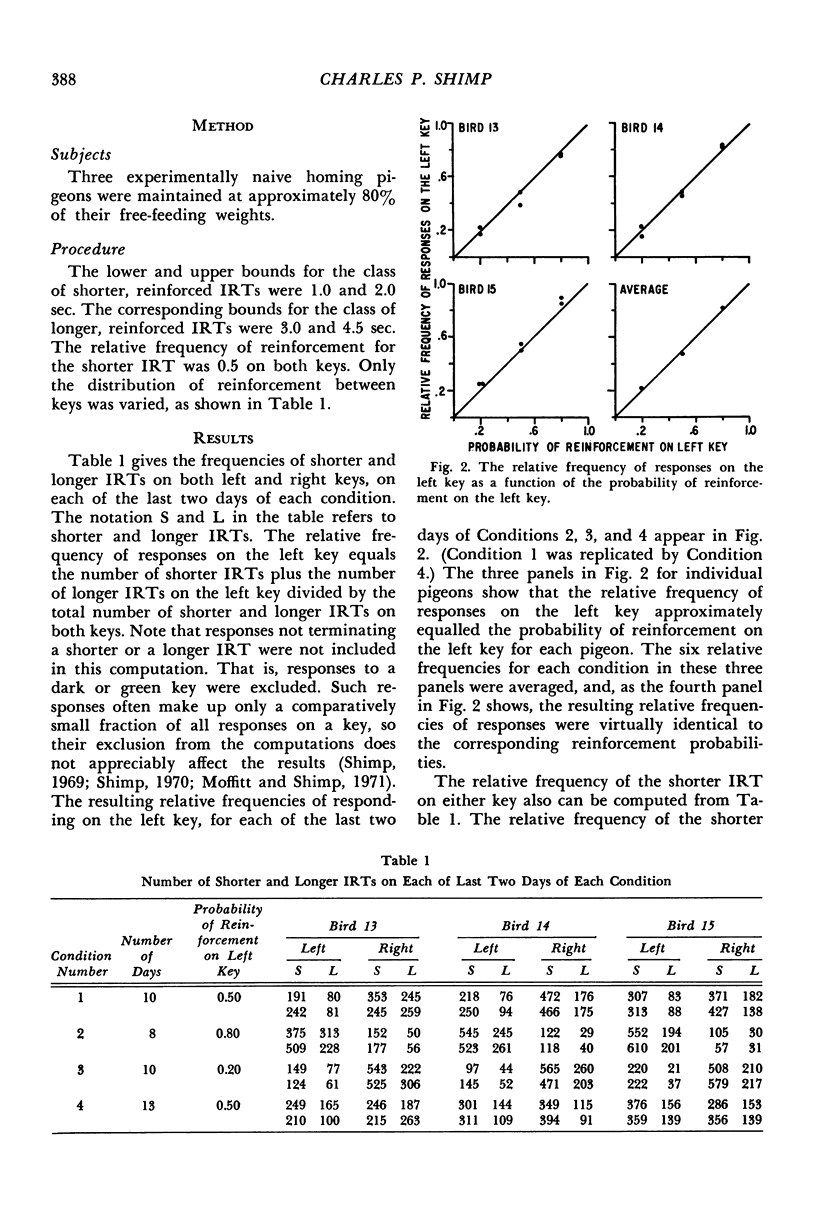
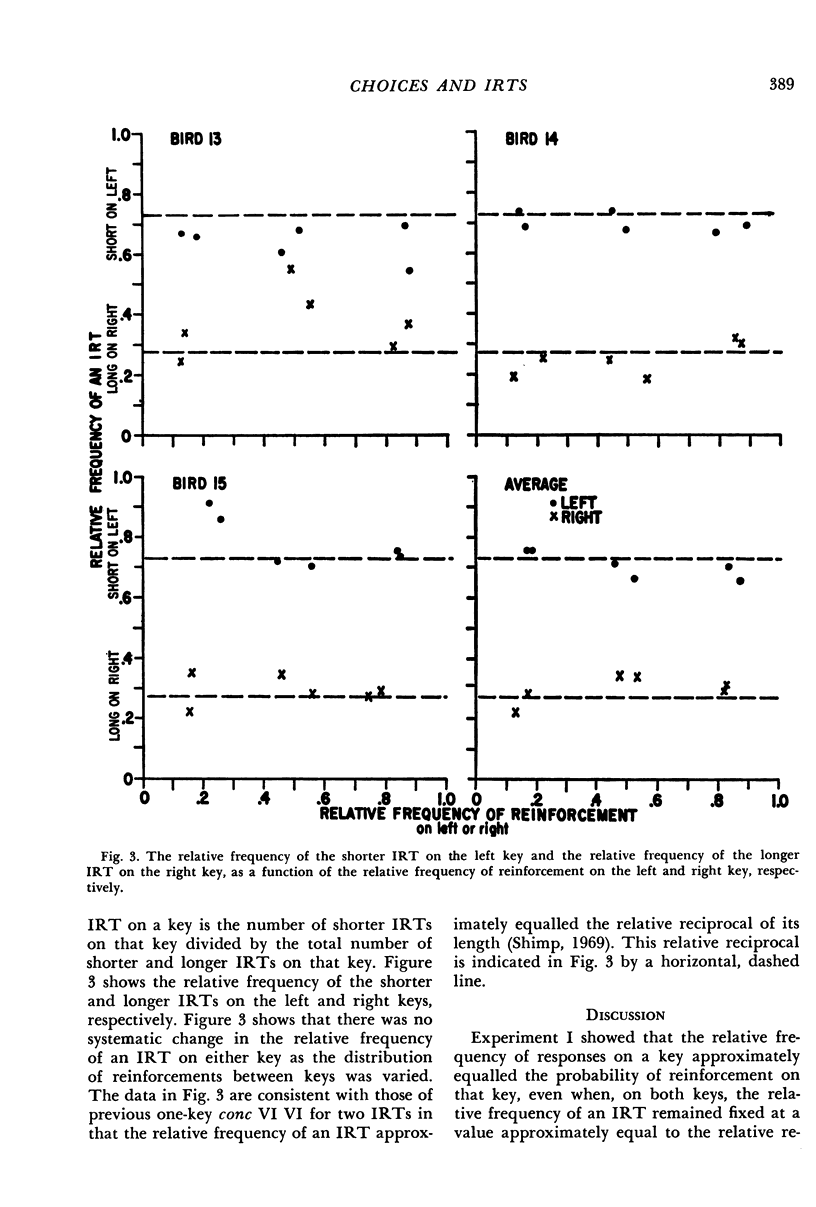
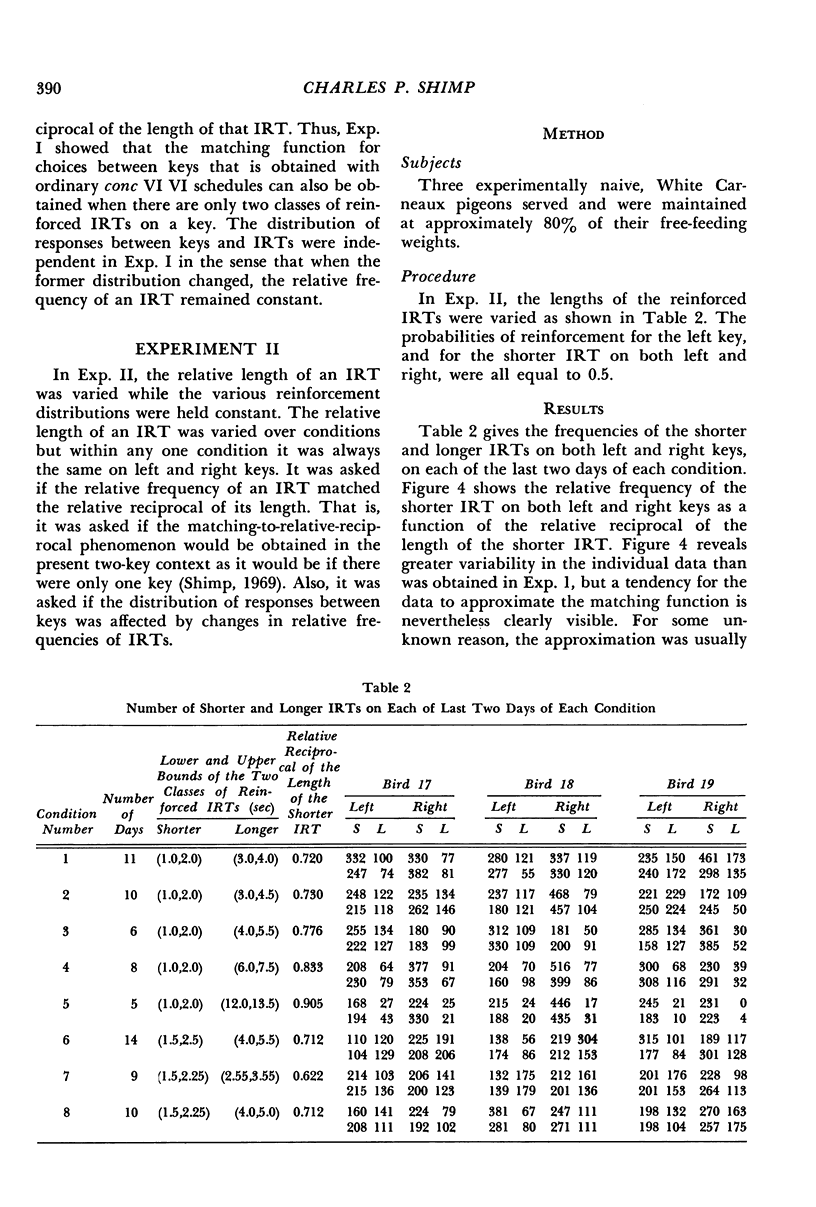
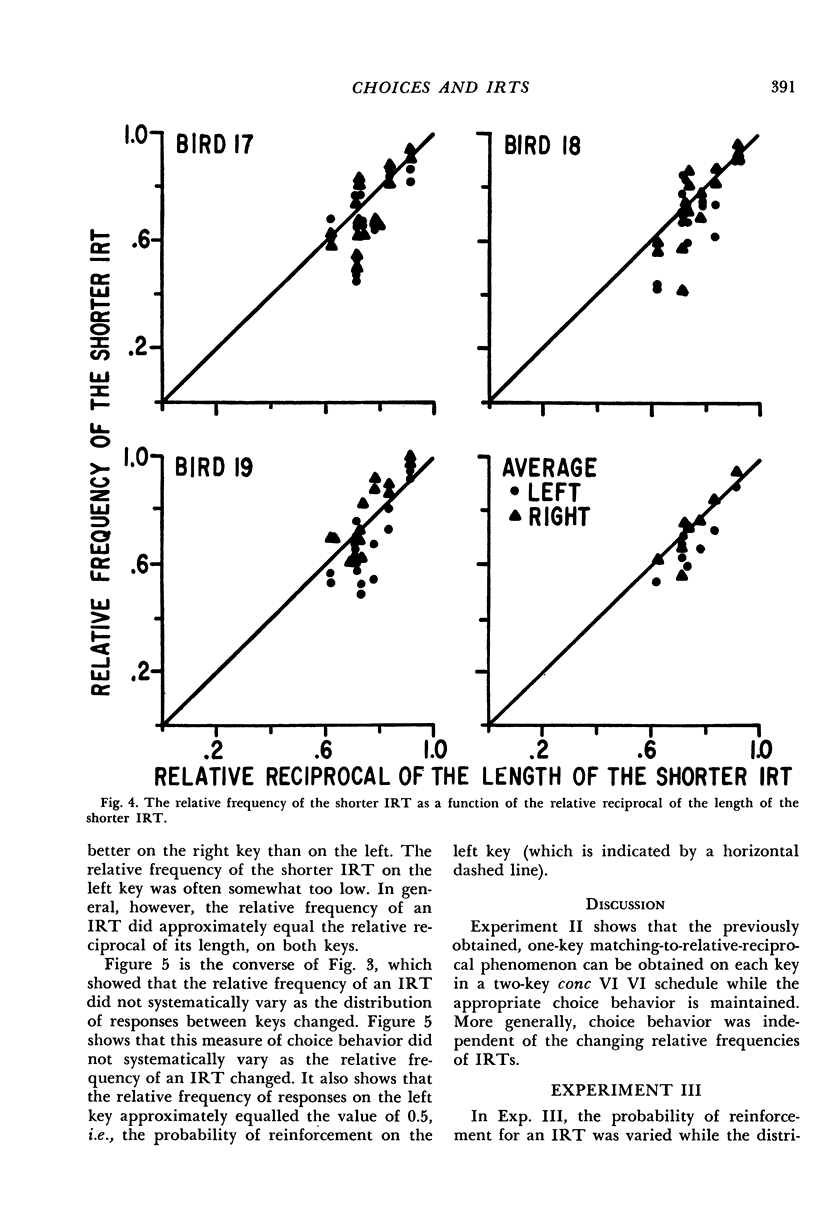
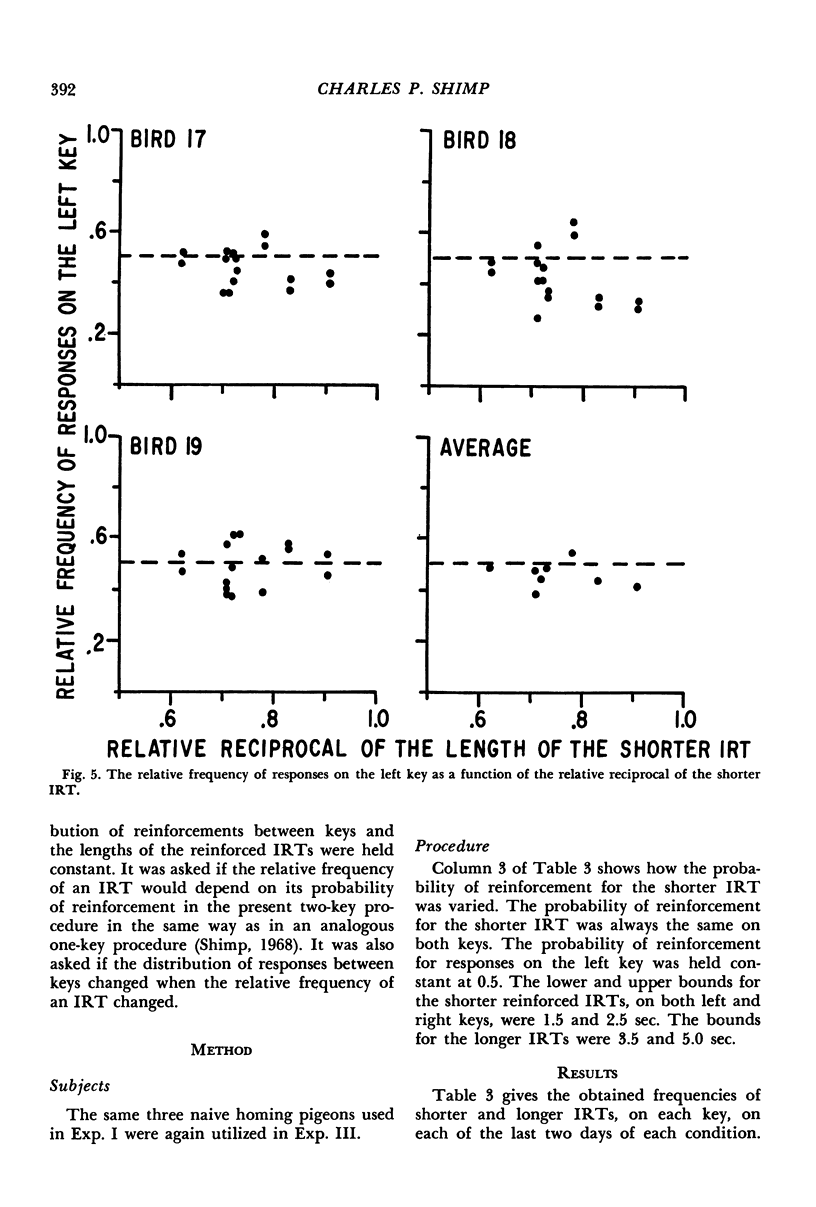
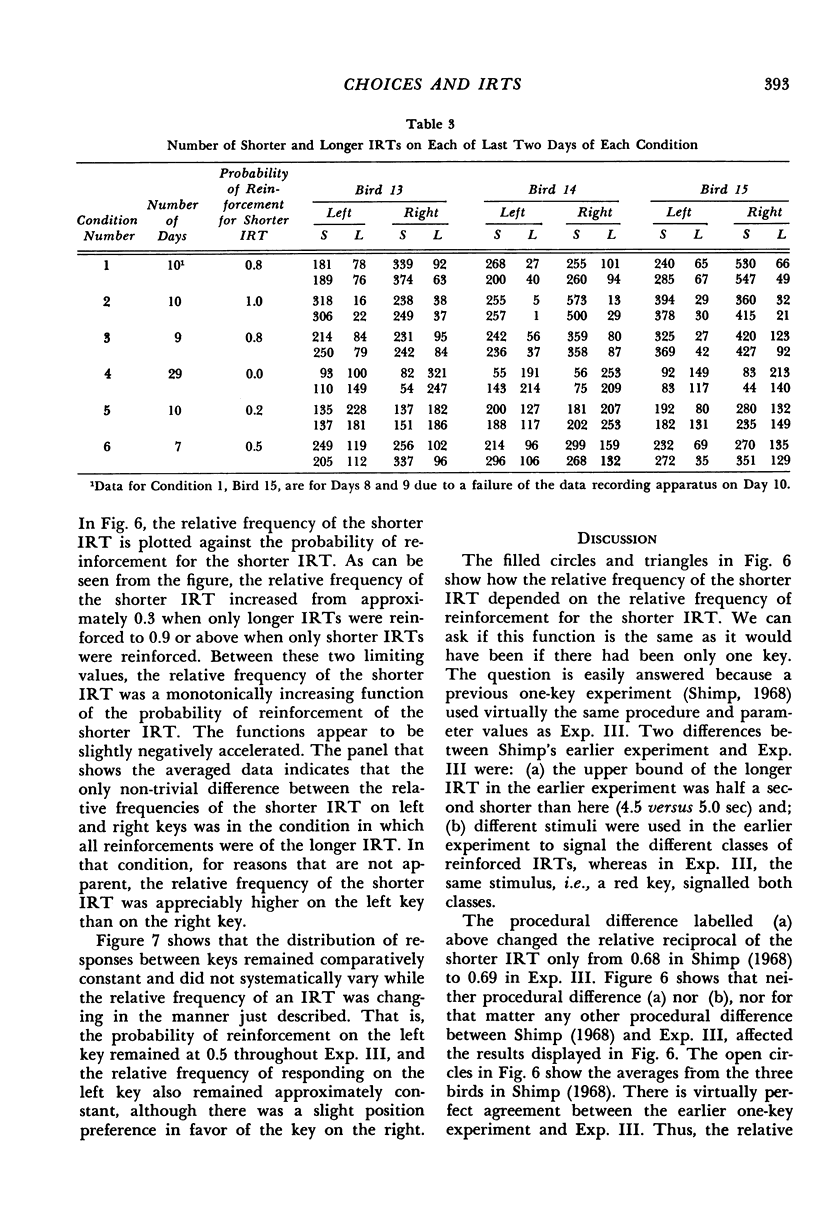
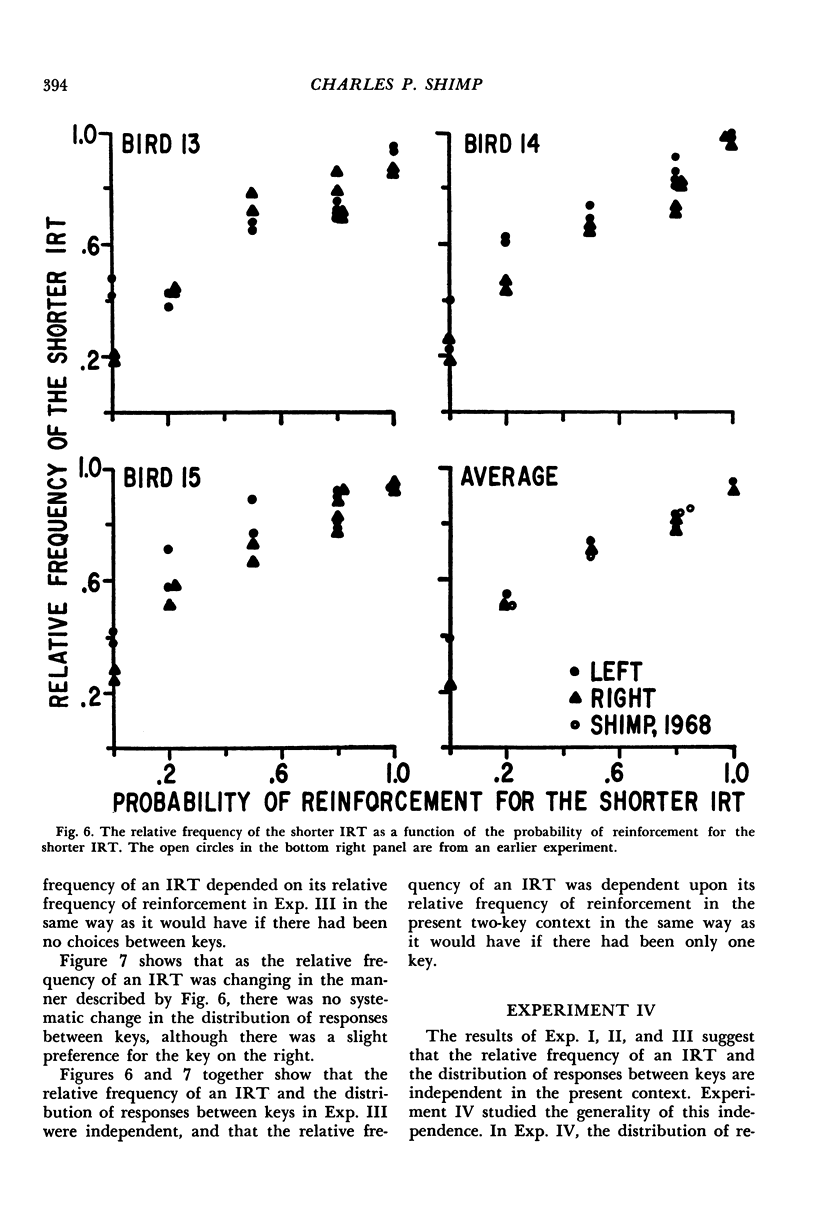
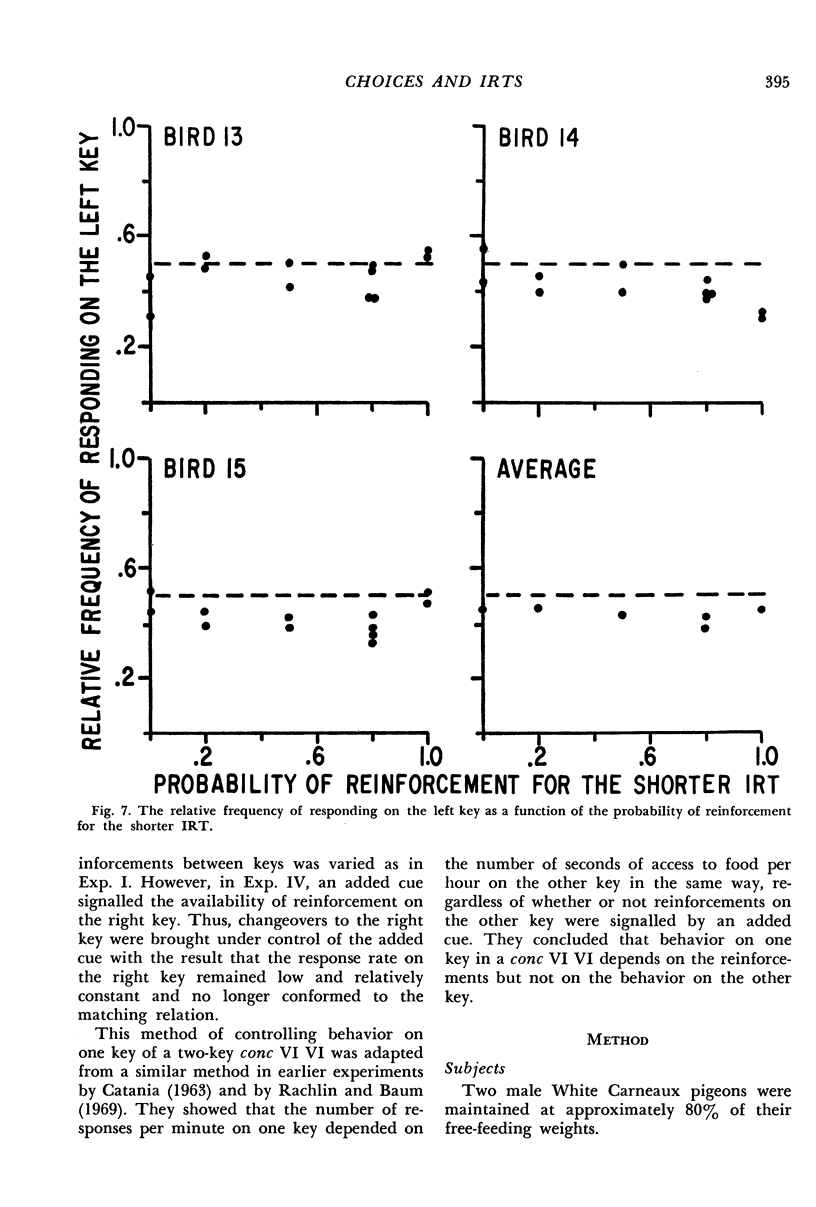
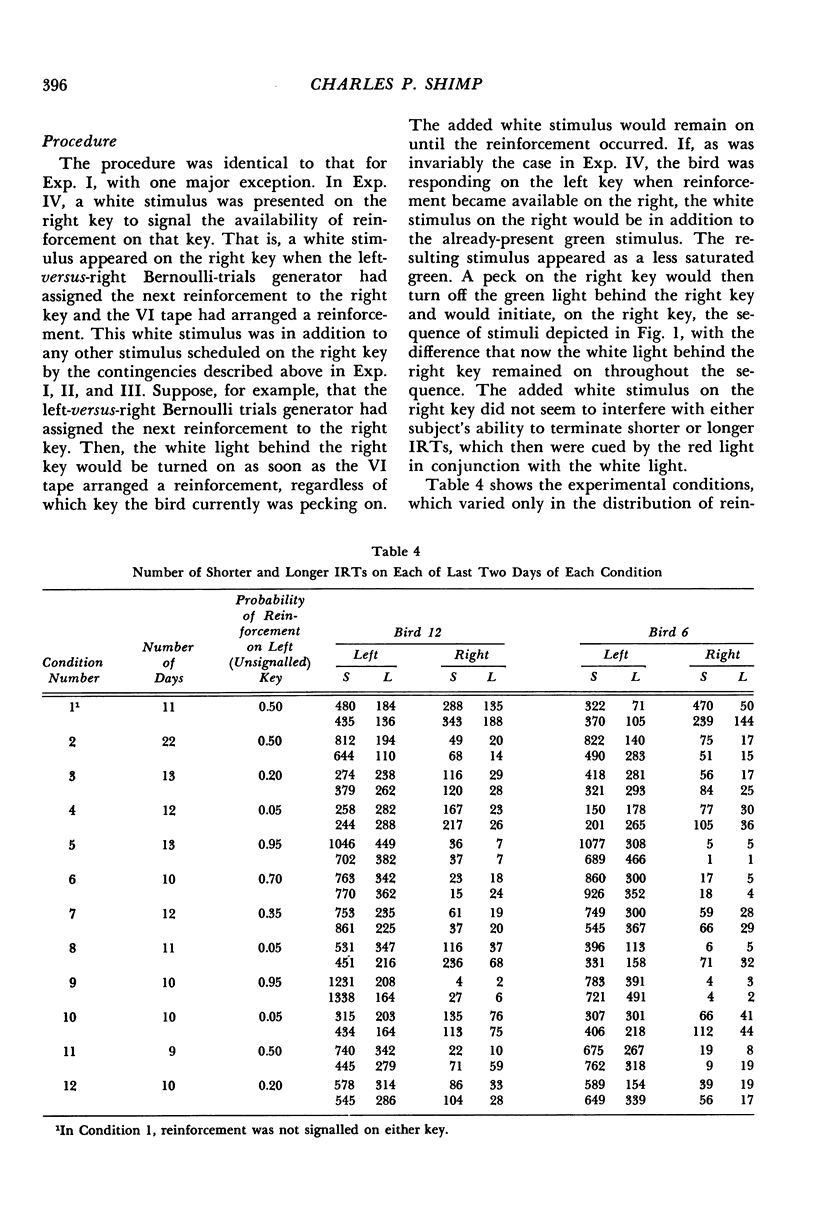
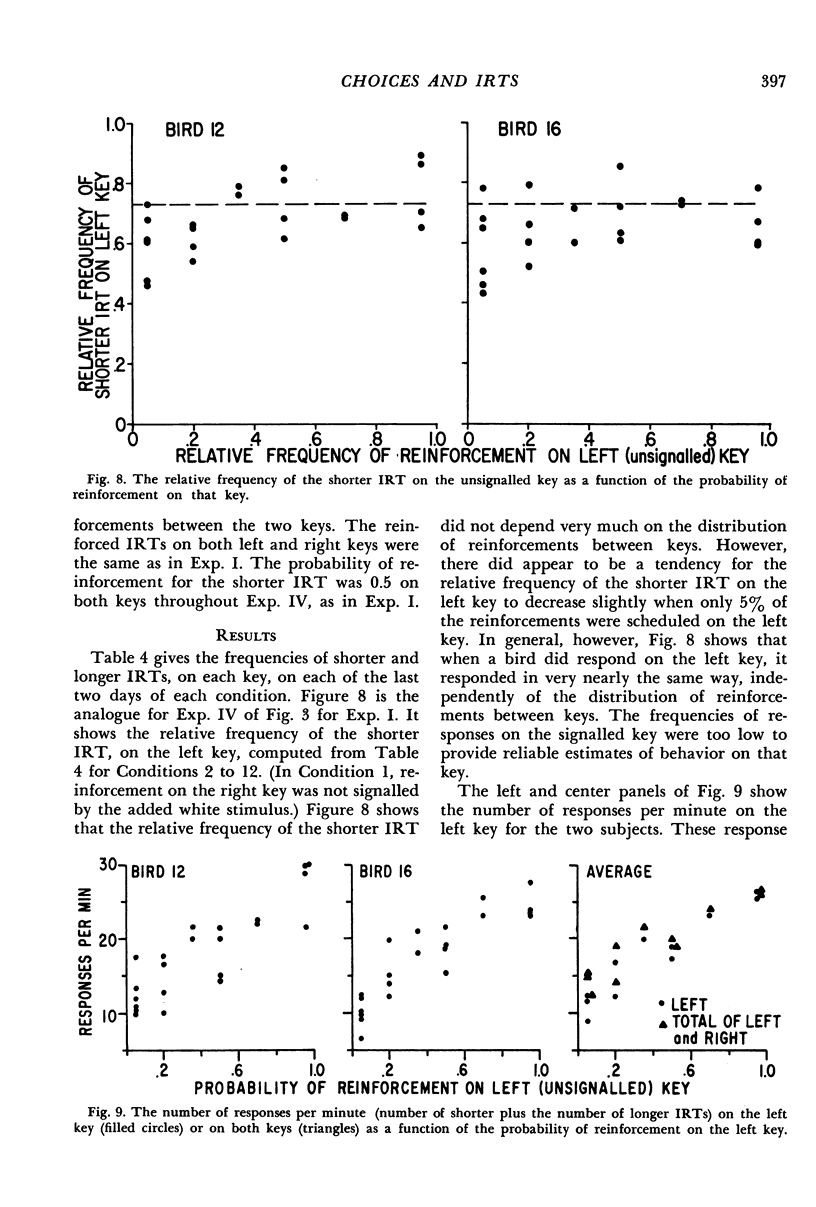
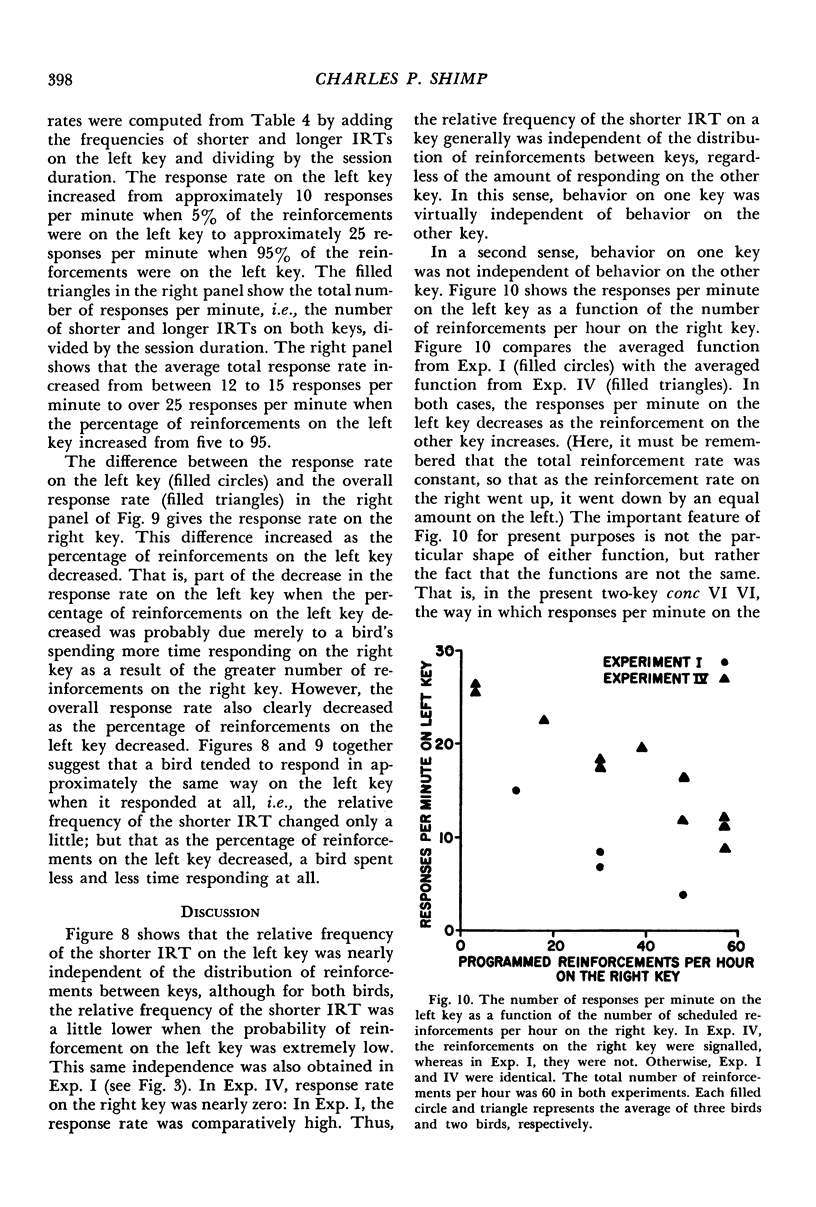
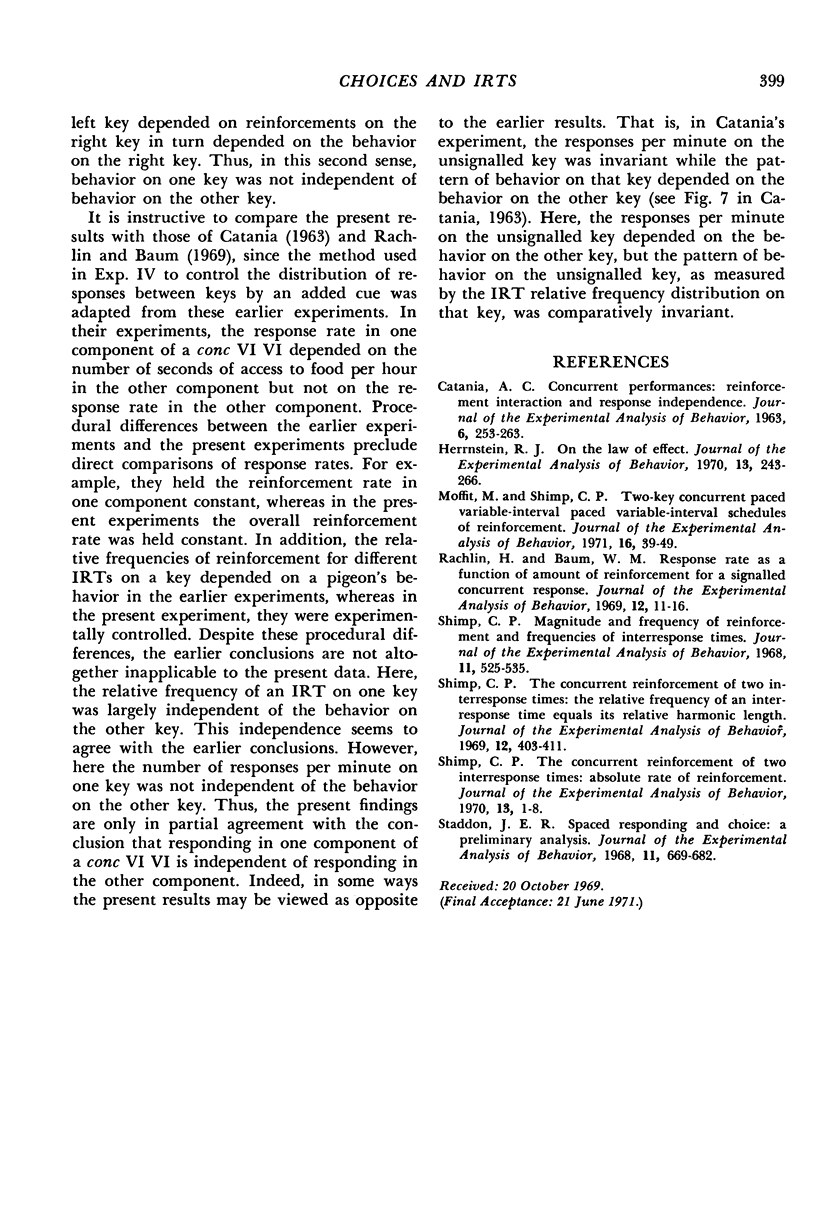
Selected References
These references are in PubMed. This may not be the complete list of references from this article.
- CATANIA A. C. Concurrent performances: reinforcement interaction and response independence. J Exp Anal Behav. 1963 Apr;6:253–263. doi: 10.1901/jeab.1963.6-253. [DOI] [PMC free article] [PubMed] [Google Scholar]
- Herrnstein R. J. On the law of effect. J Exp Anal Behav. 1970 Mar;13(2):243–266. doi: 10.1901/jeab.1970.13-243. [DOI] [PMC free article] [PubMed] [Google Scholar]
- Moffitt M., Shimp C. P. Two-key concurrent paced variable-interval paced variable-interval schedules of reinforcement. J Exp Anal Behav. 1971 Jul;16(1):39–49. doi: 10.1901/jeab.1971.16-39. [DOI] [PMC free article] [PubMed] [Google Scholar]
- Rachlin H., Baum W. M. Response rate as a function of amount of reinforcement for a signalled concurrent response. J Exp Anal Behav. 1969 Jan;12(1):11–16. doi: 10.1901/jeab.1969.12-11. [DOI] [PMC free article] [PubMed] [Google Scholar]
- Shimp C. P. Magnitude and frequency of reinforcement and frequencies of interresponse times. J Exp Anal Behav. 1968 Sep;11(5):525–535. doi: 10.1901/jeab.1968.11-525. [DOI] [PMC free article] [PubMed] [Google Scholar]
- Shimp C. P. The concurrent reinforcement of two interresponse times: absolute rate of reinforcement. J Exp Anal Behav. 1970 Jan;13(1):1–8. doi: 10.1901/jeab.1970.13-1. [DOI] [PMC free article] [PubMed] [Google Scholar]
- Shimp C. P. The concurrent reinforcement of two interresponse times: the relative frequency of an interresponse time equals its relative harmonic length. J Exp Anal Behav. 1969 May;12(3):403–411. doi: 10.1901/jeab.1969.12-403. [DOI] [PMC free article] [PubMed] [Google Scholar]
- Staddon J. E. Spaced responding and choice: a preliminary analysis. J Exp Anal Behav. 1968 Nov;11(6):669–682. doi: 10.1901/jeab.1968.11-669. [DOI] [PMC free article] [PubMed] [Google Scholar]


